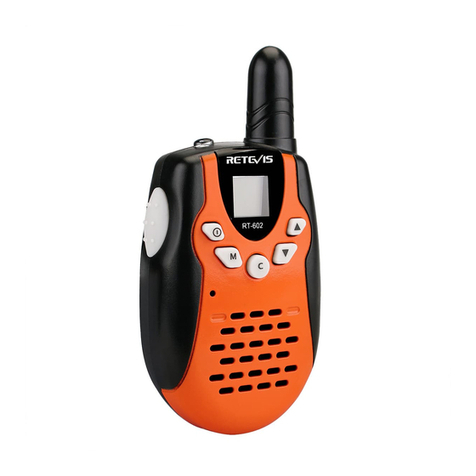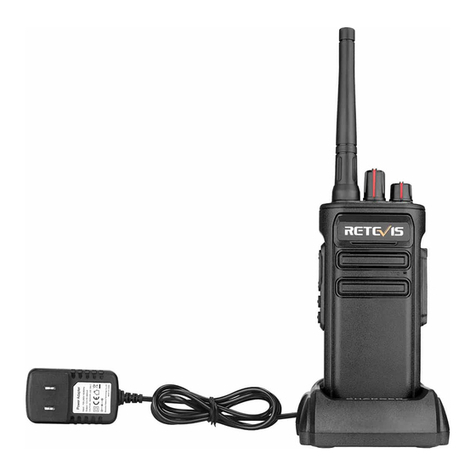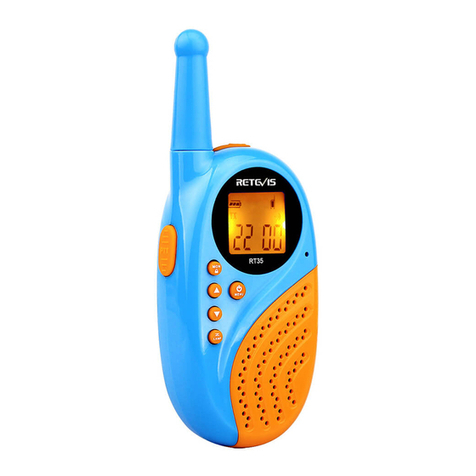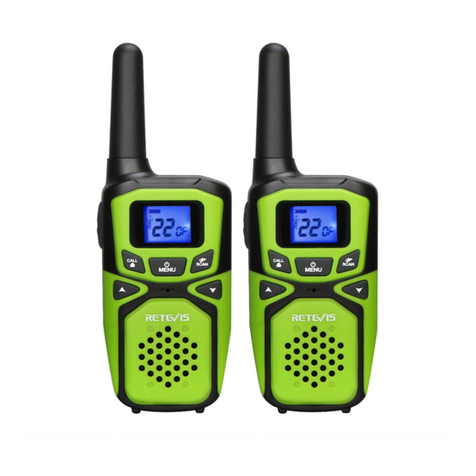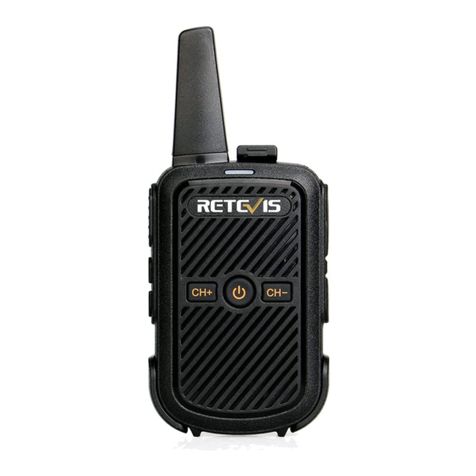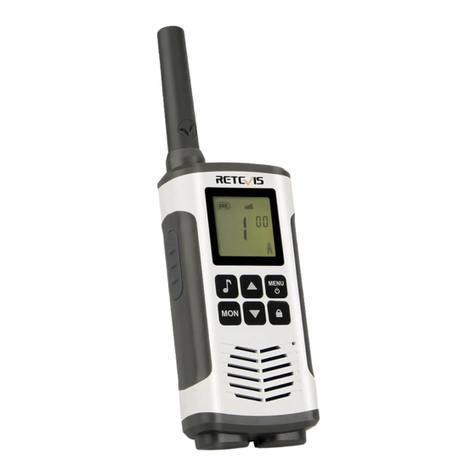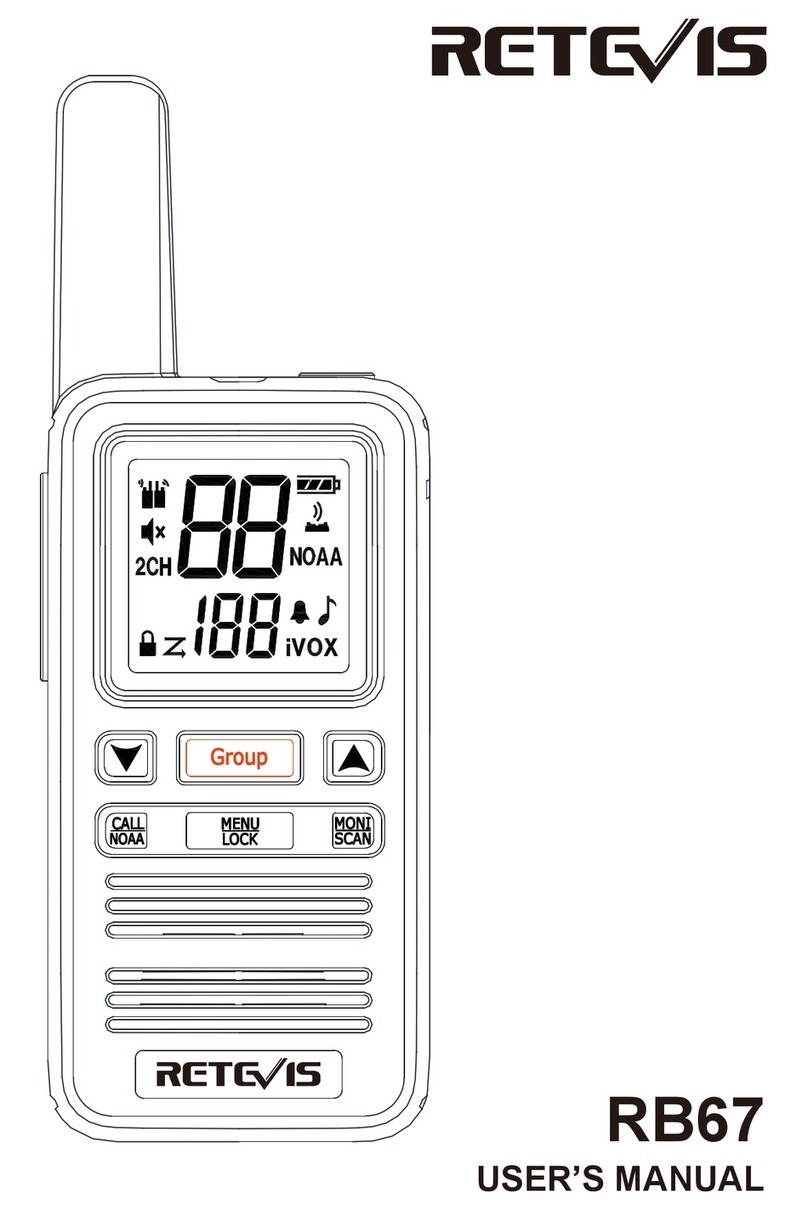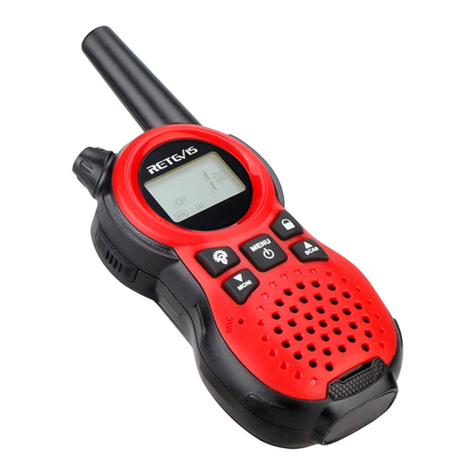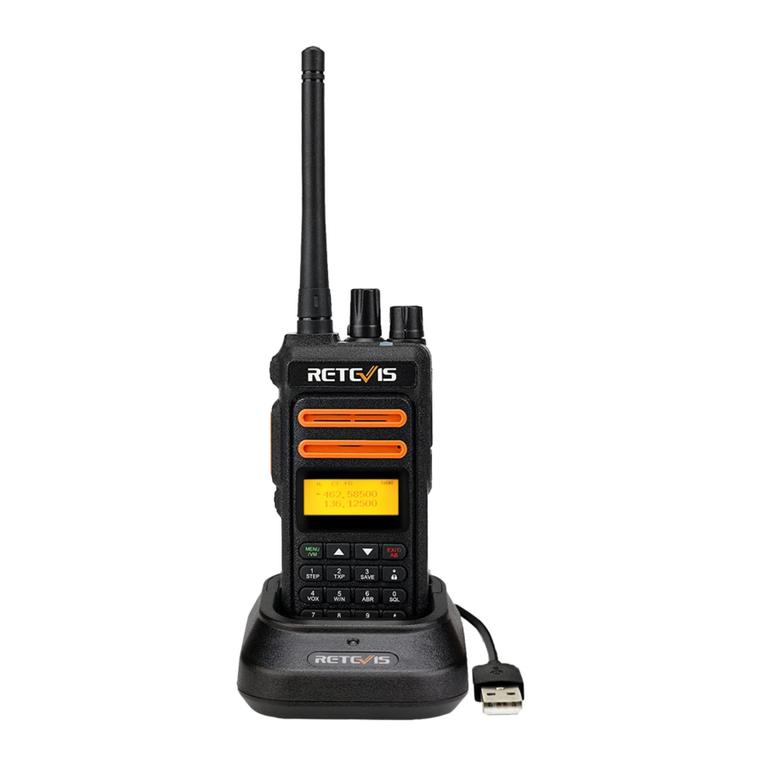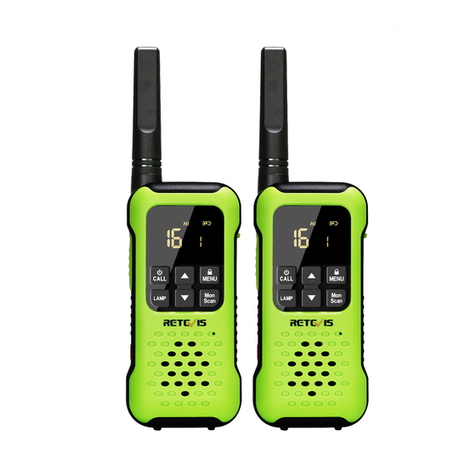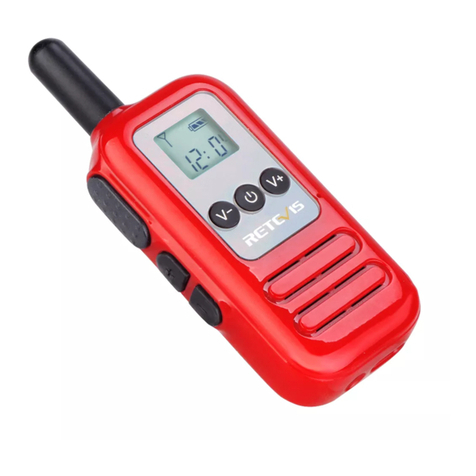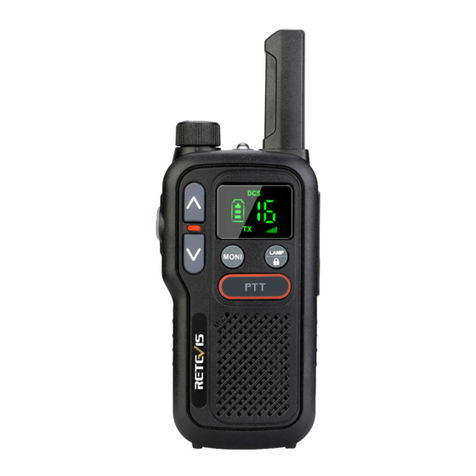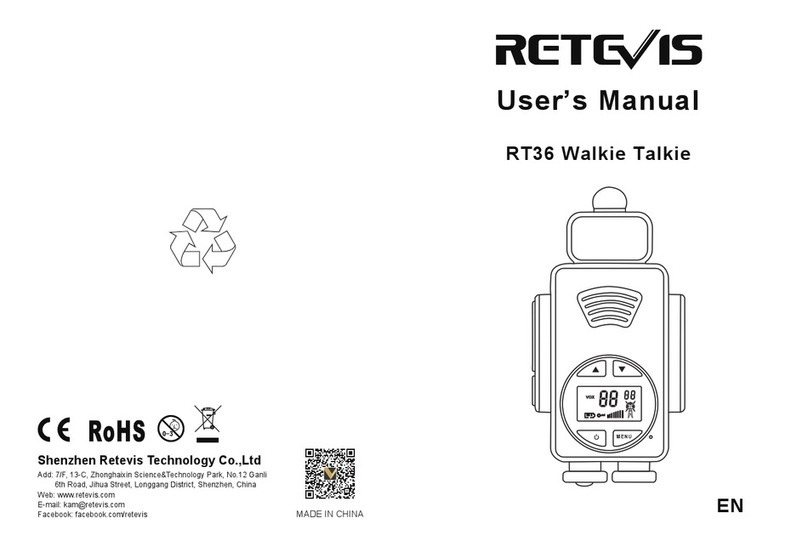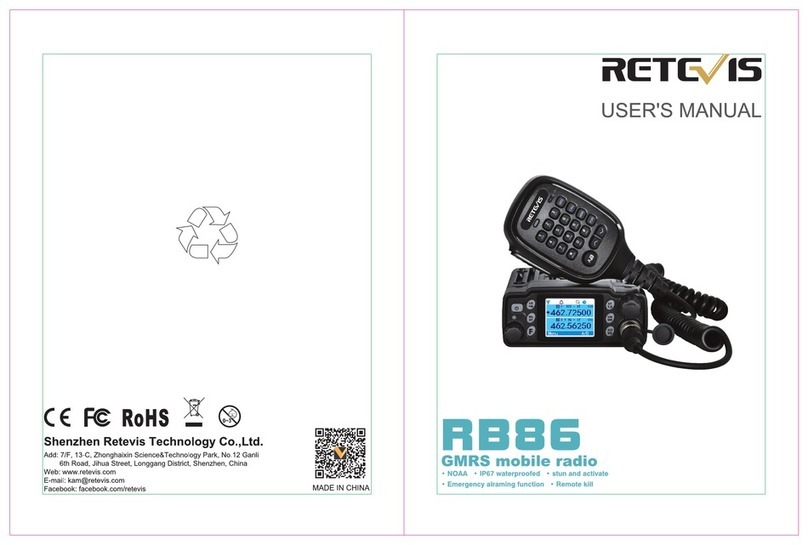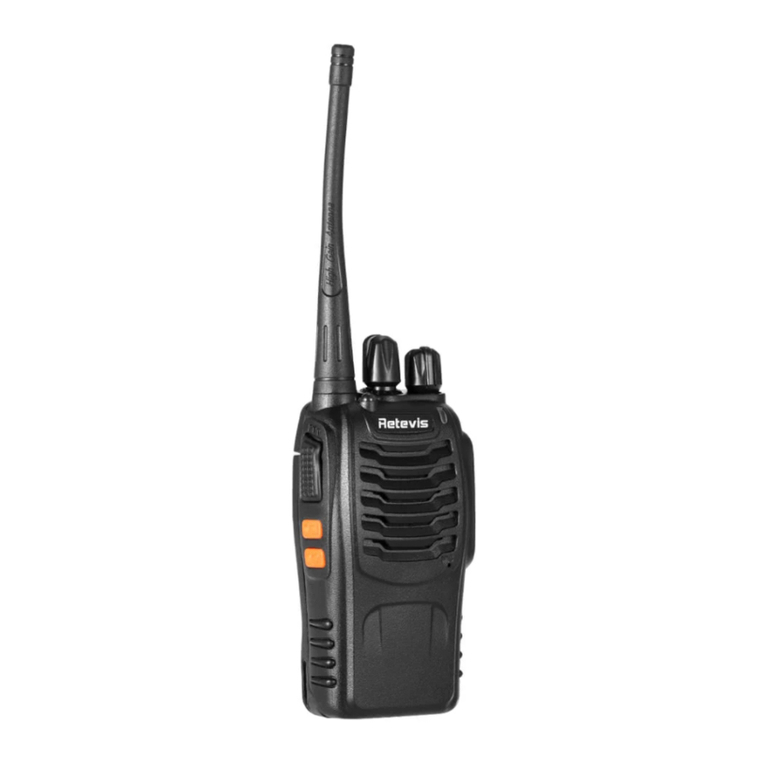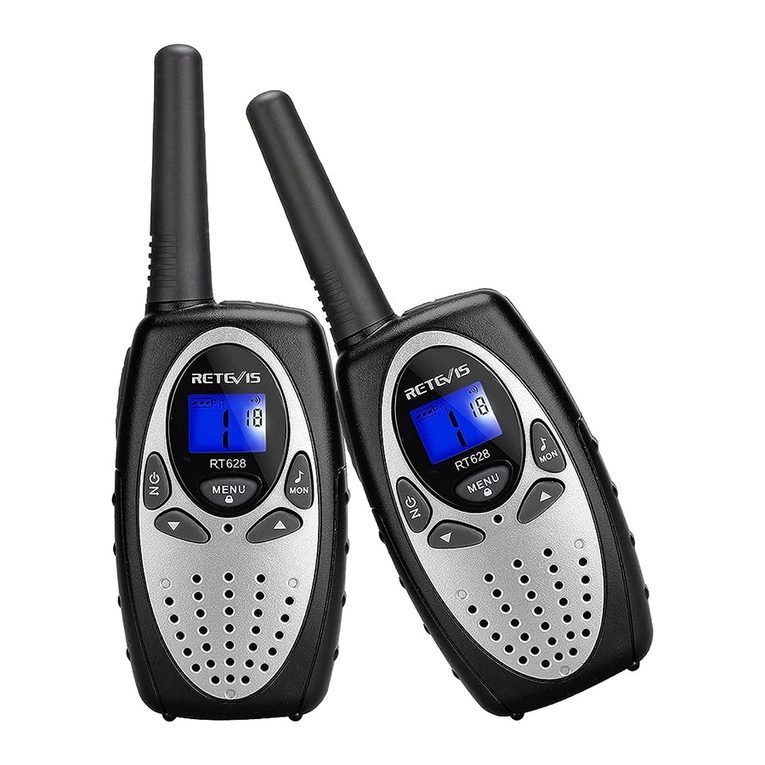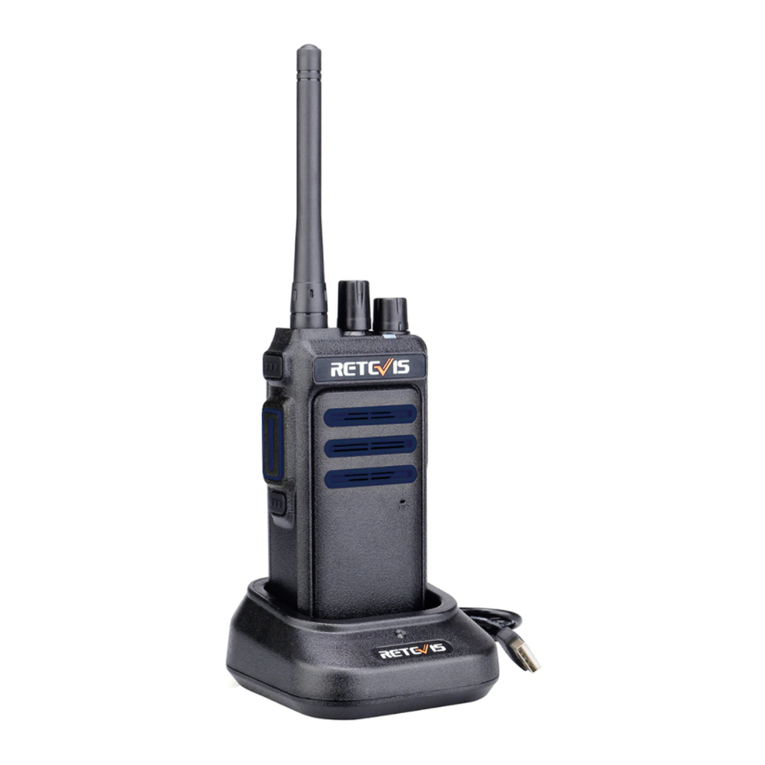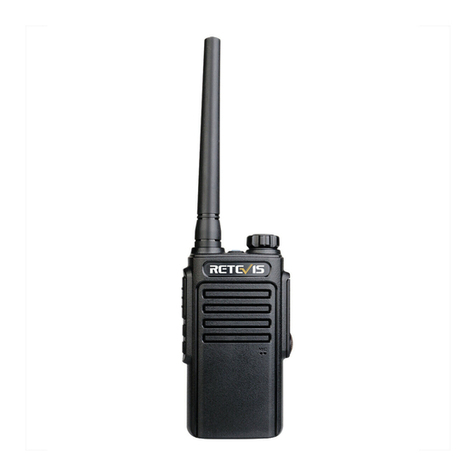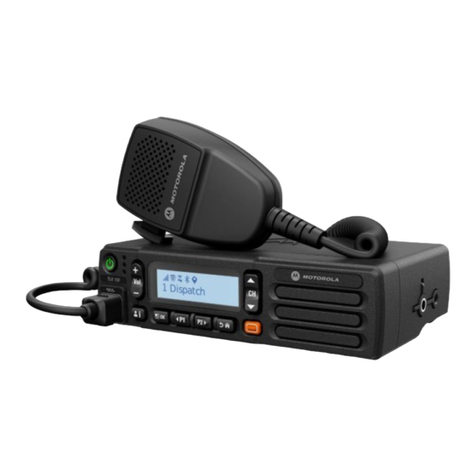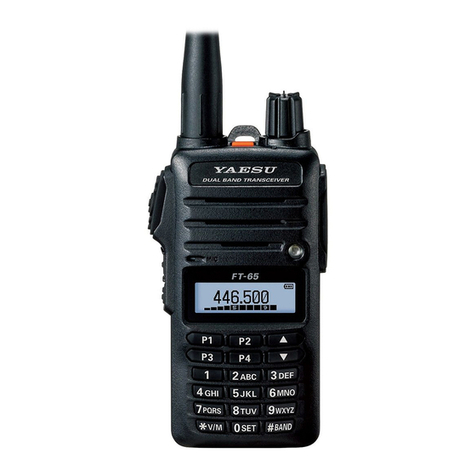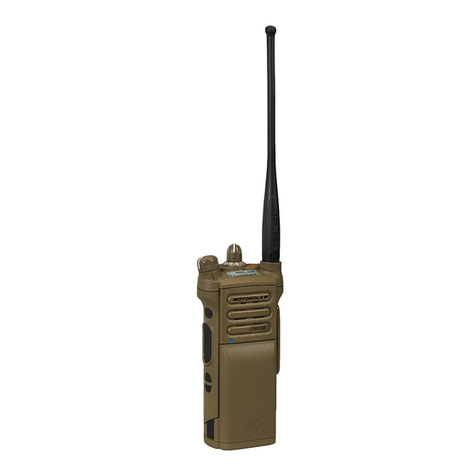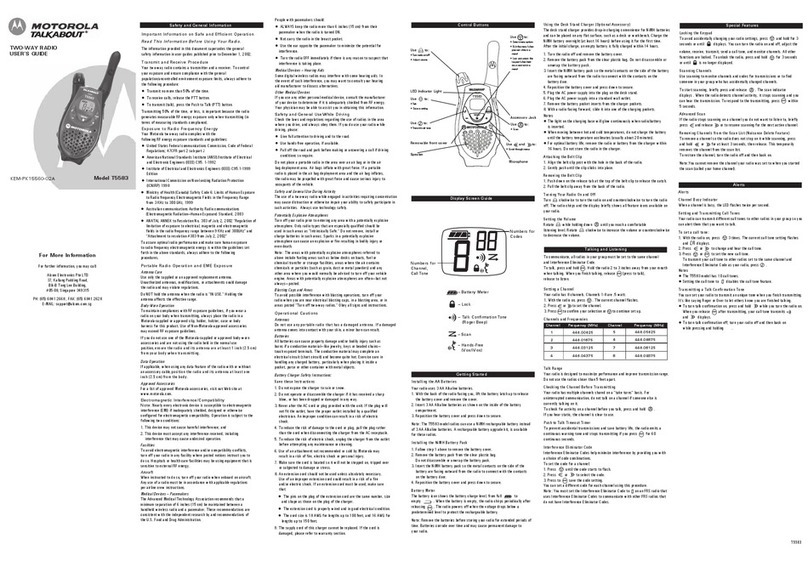
8
RF ENERGY EXPOSURE AND PRODUCT SAFETY GUIDE
FOR PORTABLE TWO-WAY RADIOS
Before using this radio, read this guide which contains important
operating instructions for safe usage and rf energy awareness
and control for compliance with applicable standards and
regulations.
ATTENTION!
This two-way radio uses electromagnetic energy in the radio frequency (RF)
spectrum to provide communications between two or more users over a distance.
RF energy, which when used improperly, can cause biological damage.
All Retevis two-way radios are designed, manufactured, and tested to ensure
they meet government-established RF exposure levels. In addition, manufactur-
ers also recommend specific operating instructions to users of two-way radios.
These instructions are important because they inform users about RF energy
exposure and provide simple procedures on how to control it.
Please refer to the following websites for more information on what RF energy
exposure is and how to control your exposure to assure compliance with
established RF exposure limits:http://www.who.int/en/
Local Government Regulations
When two-way radios are used as a consequence of employment, the Local
Government Regulations requires users to be fully aware of and able to control
their exposure to meet occupational requirements. Exposure awareness can be
facilitated by the use of a product label directing users to specific user awareness
information. Your Retevis two-way radio has a RF Exposure Product Label. Also,
your Retevis user manual, or separate safety booklet includes information and
operating instructions required to control your RF exposure and to satisfy
compliance requirements.
Radio License
Governments keep the radios in classification, business two-way radios operate
on radio frequencies that are regulated by the local radio management
departments (FCC, ISED, OFCOM, ANFR, BFTK, Bundesnetzagentur...).To
transmit on these frequencies, you are required to have a license issued by them.
The detailed classification and the use of your two radios, please contact the
local government radio management departments.
Use of this radio outside the country where it was intended to be distributed is
subject to government regulations and may be prohibited.
Unauthorized modification and adjustment
Changes or modifications not expressly approved by the party responsible for
compliance may void the user’s authority granted by the local government radio
management departments to operate this radio and should not be made. To
comply with the corresponding requirements, transmitter adjustments should be
made only by or under the supervision of a person certified as technically
qualified to perform transmitter maintenance and repairs in the private land
mobile and fixed services as certified by an organization representative of the
user of those services.
